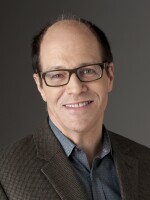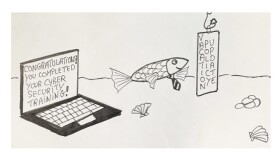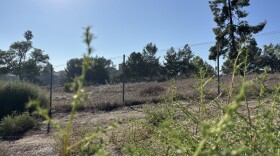The murder of 20 school children and six educators at Sandy Hook Elementary School in Newtown, Conn. on Dec. 14, 2012 was a watershed event.
If the country could tolerate a mentally ill man gunning down first graders as they crouched in a school bathroom — without doing anything to address gun violence — nothing would ever change. Even in a country inured to mass shootings, what could be worse?
For the families of the victims, however, there was a grim coda to the murders that is the subject of Elizabeth Williamson's disturbing and important new book Sandy Hook: An American Tragedy and the Battle for Truth. Almost immediately, conspiracy theorists would insist that the killings hadn't really happened. That they were in fact a "false flag" operation designed to push a gun-control agenda. The afternoon the news broke, Alex Jones, the bombastic host of the radio show The Alex Jones Show and the website Info Wars, said "My gut is, with the timing and everything that happened, this is staged." For years afterward, a ragtag collection of conspiracists used Facebook groups and YouTube videos to promote their theories, and Jones — who made money pushing water purifiers and diet supplements on his radio show and website — gave them a forum. His audience mushroomed. "Your reputation's amazing," former President Trump told Jones in a 2015 interview.
The conspiracists could be shockingly indifferent to the families' pain. When Robbie Parker, whose 6-year-old daughter Emilie was killed, smiled nervously at the start of a press conference, it was taken as evidence that he was a "crisis actor," hired to play grieving father.
Parents were barraged with calls and emails telling them their children had been spotted somewhere, Williamson writes. The harassment went well beyond simple social-media trolling. The victims' families had their home addresses and financial data published. They were followed on the street. "I won't be satisfied until the caskets are open," Williamson quotes one of the more energetic hoaxers as having said.
It's tempting to dismiss people like this as stupid or uneducated. In fact, several of the most prominent conspiracists taught at well known public universities. James Fetzer, a retired philosophy professor at the University of Minnesota Duluth, wrote a free PDF book called Nobody Died at Sandy Hook that was downloaded at least 10 million times, Williamson notes in her book.
"Unimaginably, in time the words 'Sandy Hook' would come to symbolize a sinister development in America's cultural and technological history, transforming a massacre at school into a battle for truth," Williamson writes.
One parent would become the unlikely hero of the story Williamson tells. Lenny Pozner, whose son Noah was among the victims, tried to engage the conspiracists at first, joining their Facebook group one night to answer their questions. Pozner himself was a sometime listener of Jones, and figured he could talk the hoaxers' language. The effort largely failed. "Lets Bump this dude, we have no proof he is real," Williamson writes the group's moderator announced after three hours.
So Pozner fought back. At first, he appealed for help to Facebook and the other large social-media companies, which — legally protected from lawsuits for the content passing through their gates — had little incentive to stop the flood of misinformation. Facebook, as Williamson puts it, is "tailor-made for toxic groups — anti-vaxxers, white supremacists, conspiracy theorists — to find and recruit new members."
But Pozner learned the families could sue when conspiracists used copyrighted material such as family photos, and he formed a group of volunteers who policed the web for violations. He was also among a handful of families who took Jones and the hoaxers to court for defamation and won.
In one way, his effort succeeded. Jones hasn't publicly mentioned the words "Sandy Hook" in a long time. But Pozner would pay a price for his activism, having to move repeatedly when the hoaxers published his home address, Williamson writes. It's also not clear his efforts changed many minds. Take a look at the comments posted any time a mainstream-media story on Sandy Hook appears on YouTube. And Posner's efforts haven't stopped similar conspiracy theories from emerging after other mass-shootings. "I know scripted PR when I hear it," Jones said of one of the survivors of the 2018 shooting at Marjory Stoneman Douglas High School in Parkland, Fla.
A feature writer at The New York Times, Williamson is a compassionate story-teller and a thorough reporter who never loses sight of the larger issues Newtown presents. "Sandy Hook occurred on the cusp of a profound shift in American politics, in which politically expedient 'alternative facts' muscled out objective truth," she writes.
In other words, there's a straight line between Sandy Hook and other outlandish claims being made right now about the 2020 election and Covid vaccines. The United States has always had its share of conspiracists. What's changed is the internet, which has made it easier for them to find each other and share half-baked ideas. In an age when facts have never been more accessible, Williamson writes, truth has become an ever-more elusive commodity. Or, as Pozner himself put it, "We thought the internet would give us this accelerated society of science and information, and really, we've gone back to flat earth."
Jim Zarroli covered the Sandy Hook shooting in 2012.
Copyright 2022 NPR. To see more, visit https://www.npr.org. 9(MDAzMjM2NDYzMDEyMzc1Njk5NjAxNzY3OQ001))







